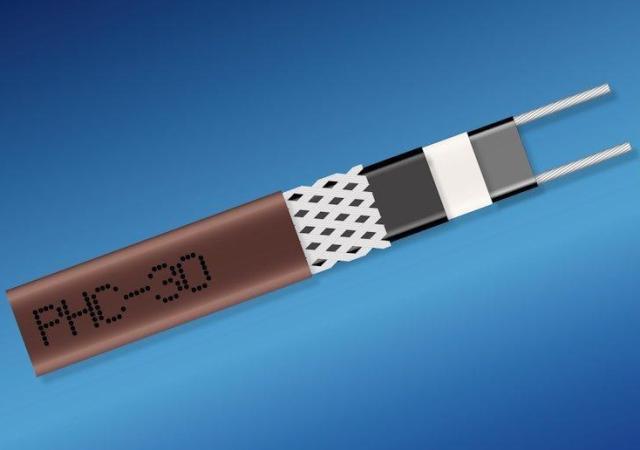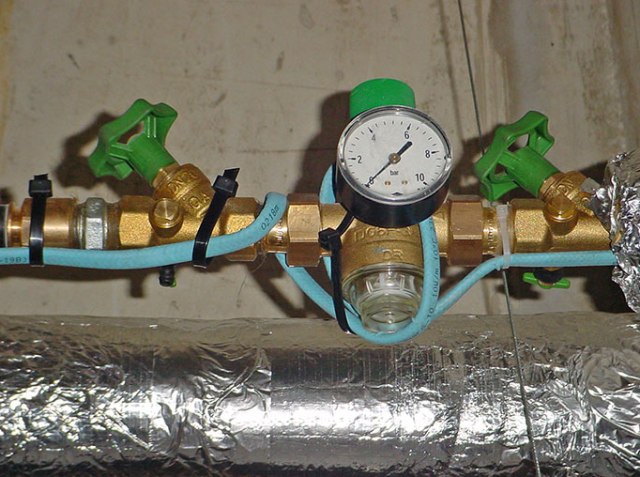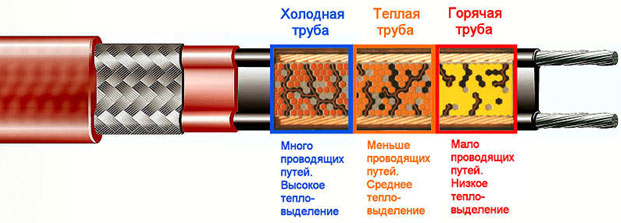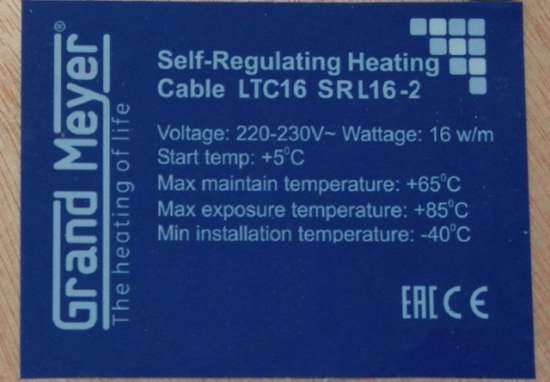Categories: How does it work
Number of views: 7880
Comments on the article: 0
The principle of operation of a self-regulating heating cable
In the winter season, roofs, cornices, water, sewer and drainpipes, and many other communication elements, tend to freeze. The problem is that when the air temperature drops below zero, the water outside and inside many pipes quickly freezes. The resulting ice interferes with the functioning of communications, and ice on roofs and cornices is a separate, well-known and very acute problem. Self-regulating heating cable helps to solve all these problems.
A self-regulating heating cable, as its name implies, is able to automatically adjust the degree of heating it provides. Moreover, different sections of the cable, being installed on different elements at different temperatures, will have exactly the temperature that is necessary to maintain the correct temperature of the heated surface. The lower the temperature of the heating object, the more the corresponding section of the cable will heat up. The higher the temperature of the heated object, the weaker the cable will be to heat it.

In the design of the self-regulating heating cable there are two conductive conductors made of coarse copper, they are located along the cable along its edges, through which power is supplied to the heating elements of the cable. Between the conductors along the entire length of the cable there are transverse conductors (heating elements proper) connected to the conductors. It turns out that all the transverse conductors are connected to each other in parallel and in parallel receive power. This matrix of elements serves as a self-regulating cable heater.
The whole design of parallel heaters, with copper wires feeding them on the sides, is wrapped with a layer of thermal protective material. A shield is placed on top of the type of braid, it is grounded during installation and protects the cable from electromagnetic influences from the outside. The outer coating of the cable is a mechanically insulating protection.

The functioning of the self-regulating heating cable is based on the elemental property of all ordinary conductors. When a current passes through any conductor, it heats up, since Joule heat is released. In this case, the resistance of the conductor increases, therefore, with a constant supply voltage, the current decreases, and the power consumed by the conductor decreases accordingly.

The part of the heating cable that is fixed on a warmer place has more resistance, and less current flows through its elements, the cable heats up less, and the place where it is installed is heated less. And in those places where the temperature is lower - in colder places - the cable section has less resistance (higher conductivity), the current flows through this section more, the cable heats up more strongly, and heats this place more intensively.
As a result, laying the cable, for example, on a cornice or pipe, and turning it on, first we get the full heating power, and as it warms up, the power consumed by the cable gradually decreases.
There is no automation to control the temperature of the cable. The cable simply changes its resistance - this is how power is regulated. It works constantly, there are no moments of complete shutdown and inclusion. For example, in winter a part of the sewer pipe adjacent to the house was equipped with a heating cable in order to maintain its temperature at about +3 ° C in order to prevent freezing. The cable will work continuously, adjusting the current intensity, it will not turn off when the specified temperature is reached.

Power per meter of heating cable length can be as little as 5-10 watts, while the most powerful models reach 150 watts of power per meter.This is not a very large power, allowing you to keep the cable turned on constantly throughout the frosty period. It is important to remember that the resource of the heating material is limited, and it is better to immediately install a thermostat so that the cable is not turned on when this is not necessary, that is, when the air temperature has become above zero.
See also on this topic:How to make a greenhouse heating with a heating cable
See also at bgv.electricianexp.com
:
